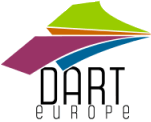Szepesi Judit
Prevention of intracellular calcium overload by blocking NCX.
Doktori értekezés, Szegedi Tudományegyetem (2000-).
(2016)
(Kéziratban)
Előnézet |
PDF
(disszertáció)
Download (1MB) | Előnézet |
Előnézet |
PDF
(tézisfüzet)
Download (550kB) | Előnézet |
Előnézet |
PDF
(tézisfüzet)
Download (759kB) | Előnézet |
Absztrakt (kivonat) idegen nyelven
Sodium-calcium exchange (NCX) is the major calcium (Ca) efflux mechanism of ventricular cardiomyocytes. Pathological conditions linked to imbalances in oxygen supply and demand (for example, ischaemia, hypoxia and heart failure) are associated with disruptions in intracellular sodium ([Na+]i) and calcium ([Ca2+]i) concentration homeostasis of myocardial cells. Calcium overload of myocardial cells is associated with electrical instability, increased diastolic and reduced systolic force generation, and an increase in oxygen consumption. Nevertheless, both the sodium-hydrogen exchanger (NHE) and abnormal sodium channel conductance (that is, increased late sodium current (INaL)) are likely to contribute to the rise in [Na+]i. The primary aim of the present project was to investigate in detail the effects of [Ca2+]i overload, induced either by increased late Na+ current or by acute ischaemia/reperfusion in isolated canine multicellular preparations and in Langendorff-perfused hearts. The NHE and NCX were inhibited by cariporide and SEA0400 or the novel, more selective ORM-10103, respectively. SEA0400 and ORM-10103 fail to eliminate the APD lengthening effect of ATX-II independently of the sequence of application in canine preparations. NHE inhibition by cariporide was highly efficient in reducing the recorded reperfusion-induced arrhythmias. Following the application of SEA0400 or ORM-10103, the number and duration of arrhythmic periods were efficiently or moderately decreased. Surprisingly, the simultaneous inhibition of the NCX and NHE failed to significantly improve the antiarrhythmic efficacy reached by NCX blockade alone. Our present data support the hypothesis that selective, partial NCX inhibition may be antiarrhythmic via restricting the Na+-induced [Ca2+]i elevation, and this protective effect is mediated primarily by its inhibitory effect on revINCX. Therefore, NCX inhibition can be considered as a promising therapeutic strategy against Ca2+ overload-induced, revNCX-mediated cardiac arrhythmias.
| Mű típusa: | Disszertáció (Doktori értekezés) |
|---|---|
| Publikációban használt név: | Szepesi Judit |
| Magyar cím: | Az intracelluláris kalcium túltelítődés kivédése az NCX gátlásával |
| Témavezető(k): | Témavezető neve Beosztás, tudományos fokozat, intézmény MTMT szerző azonosító Tóth András tudományos főmunkatárs, SZTE ÁOK Farmakológiai és Farmakoterápiai Intézet 10002546 |
| Szakterület: | 03. Orvos- és egészségtudomány > 03.01. Általános orvostudomány |
| Doktori iskola: | Multidiszciplináris Orvostudományok Doktori Iskola |
| Tudományterület / tudományág: | Orvostudományok > Elméleti orvostudományok |
| Nyelv: | angol |
| Védés dátuma: | 2016. március 02. |
| EPrint azonosító (ID): | 2667 |
| A mű MTMT azonosítója: | 3105218 |
| doi: | https://doi.org/10.14232/phd.2667 |
| A feltöltés ideje: | 2015. júl. 01. 08:37 |
| Utolsó módosítás: | 2020. ápr. 22. 14:18 |
| URI: | https://doktori.bibl.u-szeged.hu/id/eprint/2667 |
| Védés állapota: | védett |
Actions (login required)
 |
Tétel nézet |

 Repozitórium letöltési statisztika
Repozitórium letöltési statisztika Repozitórium letöltési statisztika
Repozitórium letöltési statisztika




